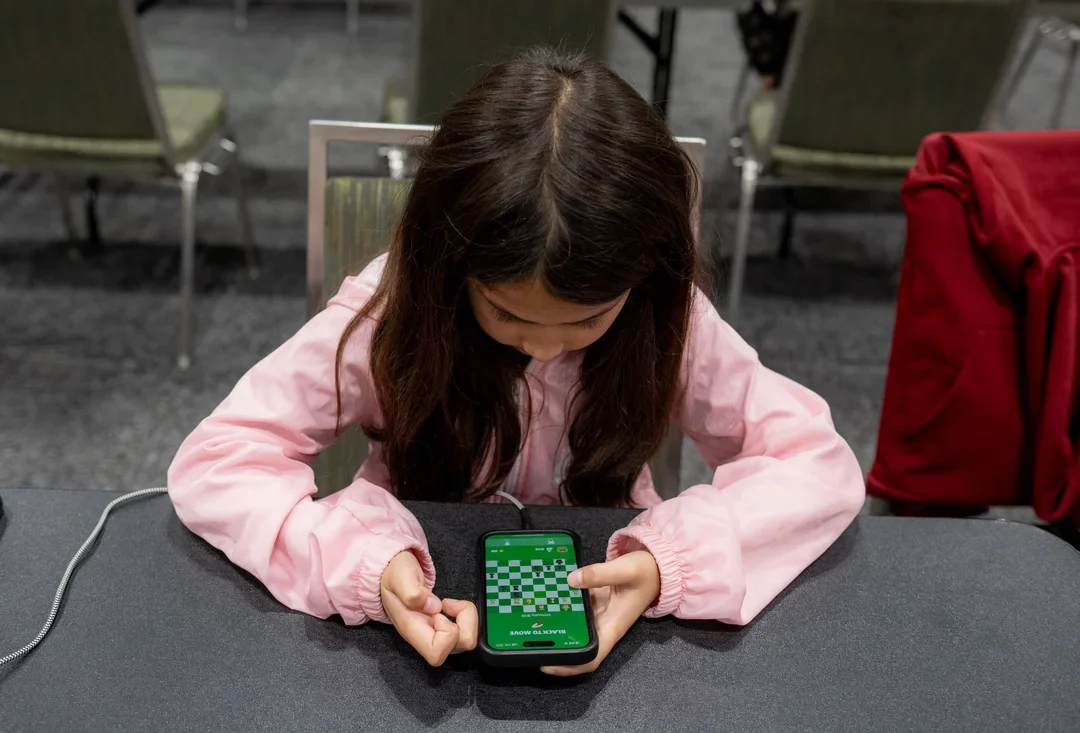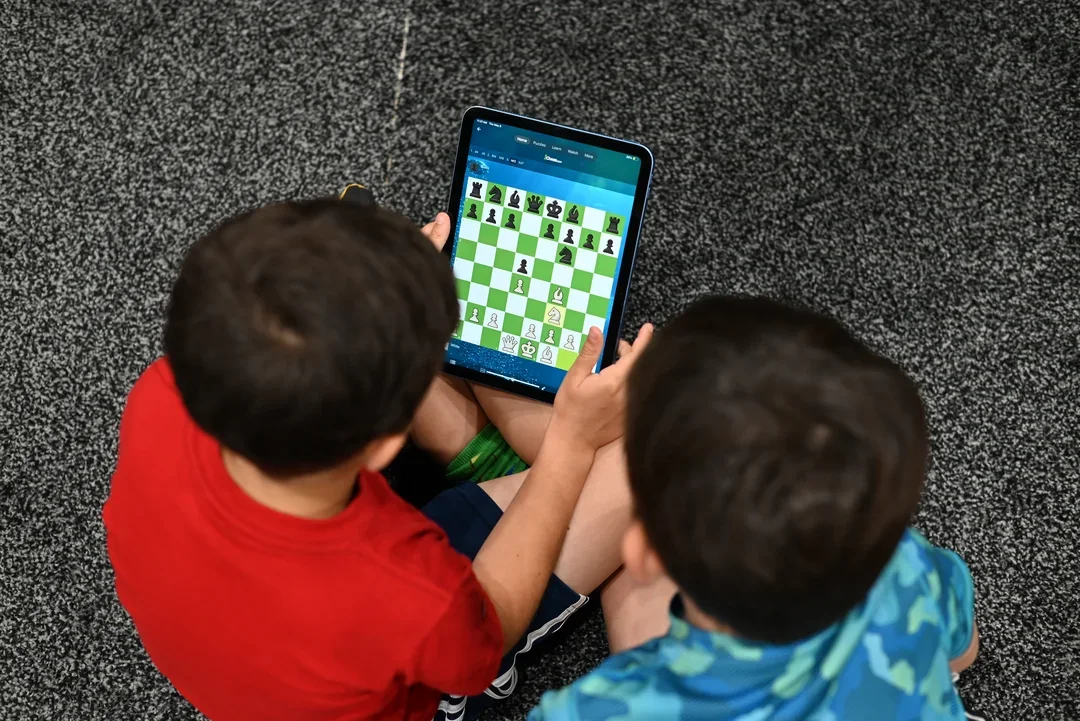Editor's note: This story first appeared in the June 2025 issue of Chess Life Kids magazine, and is re-published here in full. Consider becoming a US Chess member for more content like this — access to digital editions of both Chess Life and Chess Life Kids is a member benefit, and you can receive print editions of both magazines for a small add-on fee. Click here for a printable download of this article.
Online ... Or On Paper?
Last year I started taking piano lessons. If you’ve played any musical instrument, you know that learning the names of notes — middle C, bass clef F, treble G — is not always easy. It definitely wasn’t for me.
So I asked my teacher whether she could recommend something to help. She pointed me to an app called Flashnote, which depicts notes on the grand clef for you to name. Winged unicorns raced across the screen as I got more notes right. It was a lot of fun.
And then Yulia, my teacher, told me something very interesting.
“It’s not like it was when I was learning back in Russia,” she said with a small smile. “I had to write each note hundreds of times in a music paper notebook.”
That got me thinking. Technology and the internet have changed the way we learn to play music. From apps for learning notes to piano learning websites to YouTube channels with song demonstrations, it’s easier than ever to find resources to help you improve.
This is also true about chess, and tactics in particular.
I started playing chess before there were websites and tactics trainers. Along with over-the-board games and post-mortems with opponents, you studied printed material to improve. You solved puzzles from newspaper columns, chess magazines, and the few books you could find at your local shop.
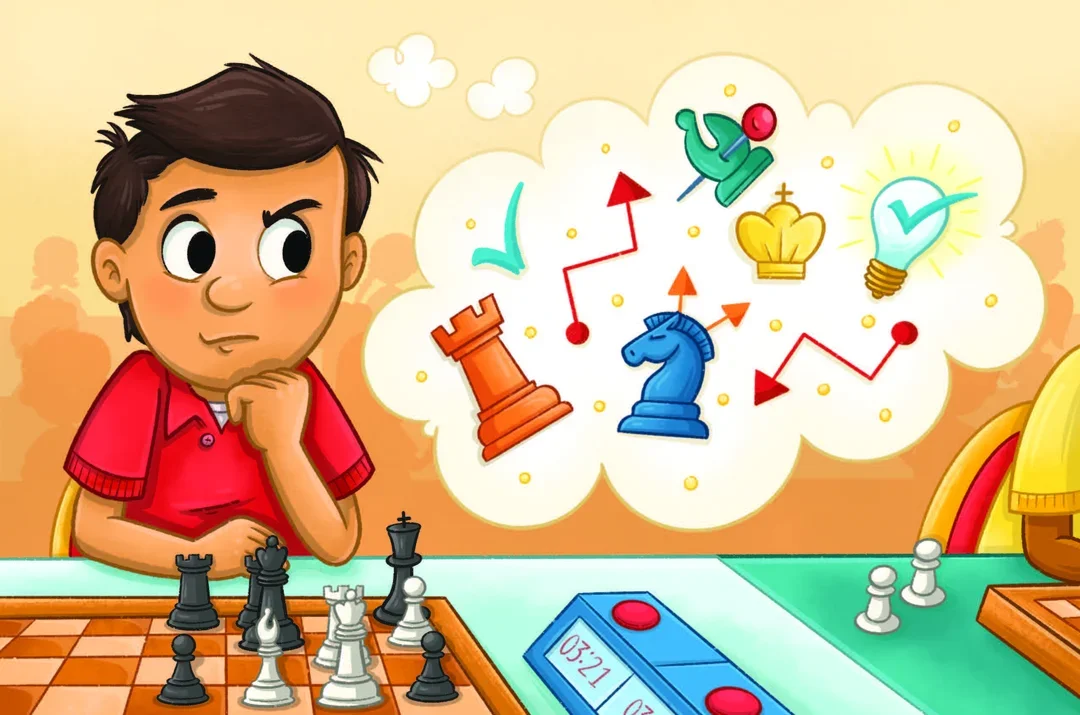
Today, of course, things are different. Most young players check their games with Stockfish instead of each other. They practice tactics online, playing round after round of Puzzle Rush or Puzzle Streak to sharpen up. The only books you see at tournaments belong to the grownups.
I began to wonder: Was anything lost when we switched from paper to screens? Is there some part of improvement that gets shortchanged?
I reached out to a number of America’s top players and teachers, and asked them about the value of online tactics trainers compared to books. Here’s what I learned.
The Kids are Online
One of the biggest reasons for the popularity of online tactics trainers is their convenience. “Kids love screens,” New York chess teacher WFM Elizabeth Spiegel told me. “It’s much easier to get kids to do online work than paper work.”
That’s why she asks her players to use Puzzle Streak on Lichess (similar to Puzzle Rush Survival on Chess.com) as part of their training: “I think it’s the fastest way for a kid to get from 0 to 1500. You can’t make a single mistake or you lose your streak. It’s untimed; the positions are great, and you can get so much practice.”
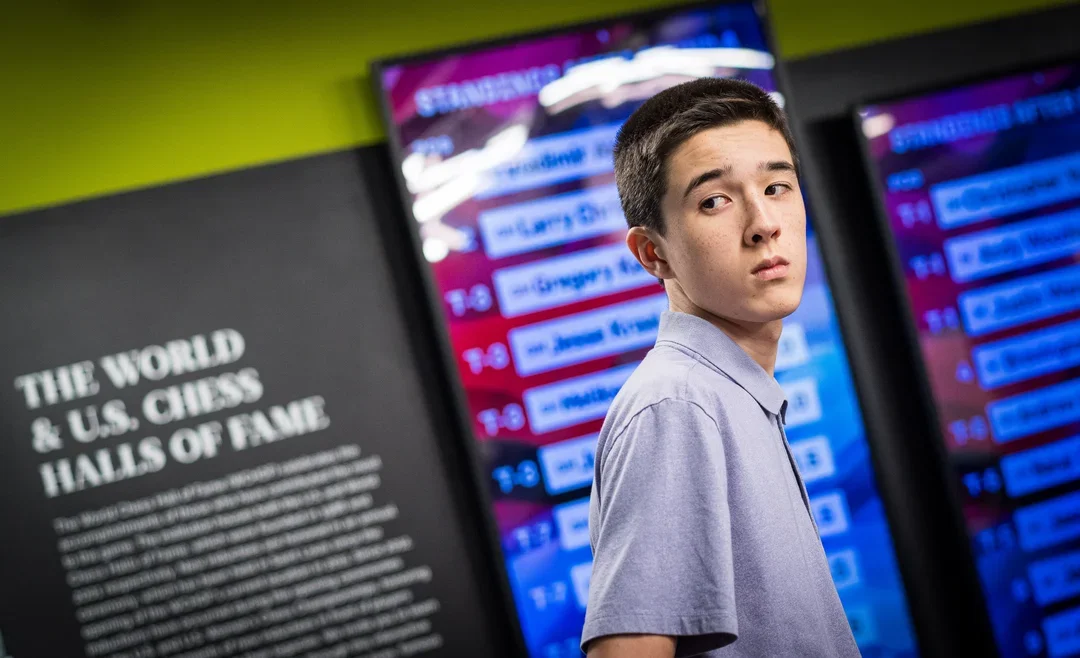
It’s no surprise that GM Andy Woodward, the current Chess.com Puzzle Rush champion, also sees benefits from doing tactics online. “They’re more fun, convenient, and you save time” because you don’t have to set up the positions, he said. “Online tactics have large databases of positions you can tailor to your level. They give you feedback instantly and sometimes give you a feeling like you’re playing a game.”
But it was veteran GM and renowned coach Gregory Kaidanov who most strongly recommended the online tactics trainers. He sees three advantages to them: “One advantage is that, in most cases, there is no second solution,” or multiple ways to win. “This is a problem for some older books written in the pre-computer era. There’s also usually an engine built into the trainer, so if your solution is not correct, you can see why right away.
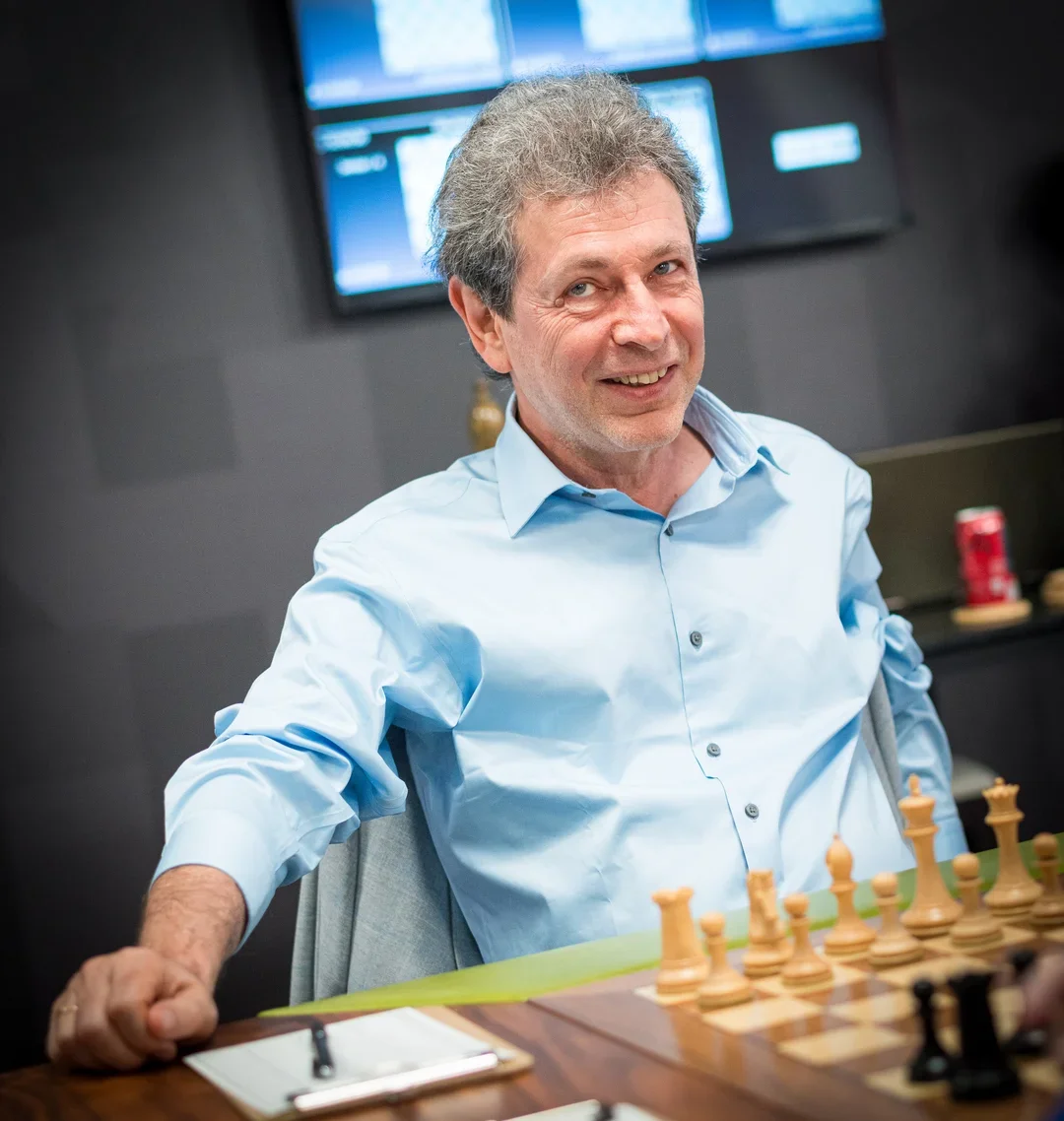
“And perhaps most importantly, the program or website usually gives you problems based on your current puzzle rating. This means you get positions which are doable but also challenging. If you can’t solve the position right away, I suggest you set it up on the chessboard.”
That doesn’t mean that Kaidanov is against using tactics books. “You just need to find one,” he says, “that is suitable for your level.”
If You Know, You Know
So if tactics trainers have all of these benefits, what’s the downside? Why would anyone spend time doing anything else?
NM Matan Prilleltensky pointed out a strange phenomenon, and maybe you’ve noticed it too: Plenty of people get really high online puzzle ratings but don’t see improvement in their over-the-board results. “Students who struggle with the most elementary tactics or calculation in games can amass shockingly high ratings on these platforms,” he wrote. “Sometimes I think, ‘What do you mean you’re X puzzle rating? I’ve seen your games, and you can’t calculate!’”
Perhaps it’s something about the nature of puzzle solving itself. One difficulty, according to GM Joel Benjamin, “is that you know there is a possible tactic in each position, and you know that it works! That’s great for pattern recognition, but not so good for decision making.”
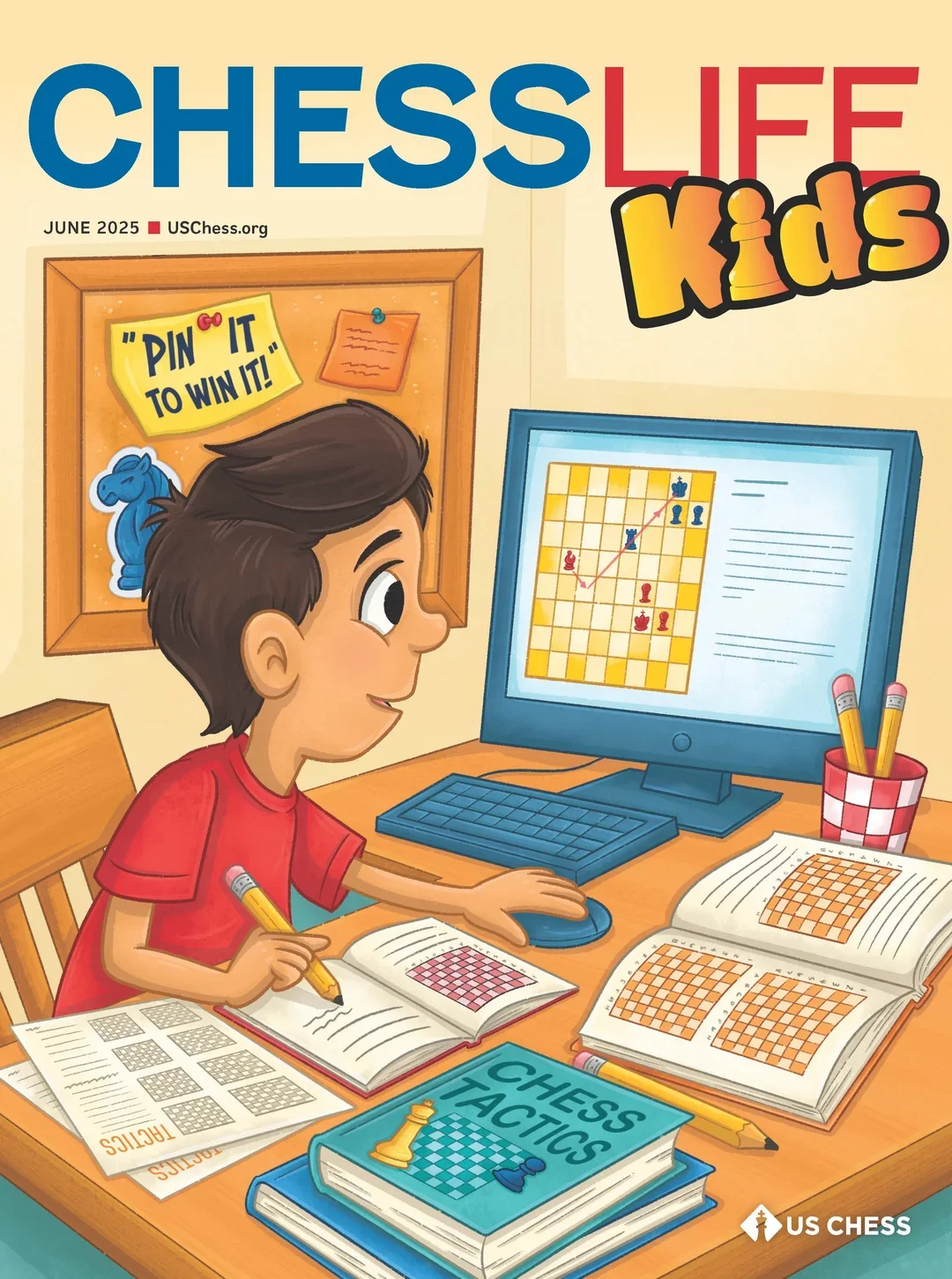
What we call “tactics” is not one single thing, but multiple skills used at the same time. To find the right move in a game you have to see the tactical pattern in play, calculate moves accurately, and visualize key positions in the solution. Not all these skills are trained equally well on screens.
Here’s an example from a recent one-minute game I played to help make this clear. (Editor's note: Click on any of the diagrams to be taken to a study with the same annotations presented).
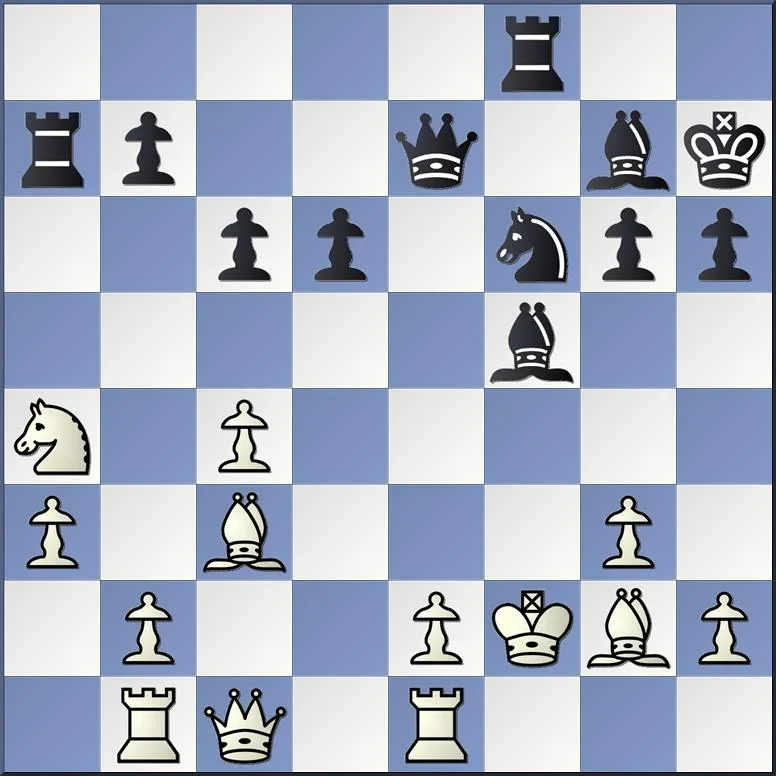
I reached this position with about 33 seconds on my clock, and immediately I saw the possibility for a “Philidor’s mate” with queen and knight smothering the king. The problem was the queen defending the e3-square. Fortunately, I had a natural move to nudge it away: 25. … Ng4+ 26. Kg1 Bxb1 27. Qxb1 Qe3+ 28. Kh1 Nf2+ 29. Kg1 Nh3+! 30. Kh1 Qg1+! 31. Rxg1 Nf2 mate.
It’s always fun to sacrifice one’s queen for mate, especially in bullet chess, but what’s interesting is that I didn’t really calculate anything after 25. ... Ng4+. I was able to play the moves almost immediately because I knew the pattern from books and from Puzzle Storm. All I had to do was recognize the pattern on the board and check to make sure I wasn’t missing any of White’s possibilities.
But not every position has such an obvious solution, and in a real game there’s no one to tell you there’s a tactic on the board. Here I’m reminded of how the early 20th-century great Rudolf Spielmann sadly compared himself to then-World Champion Alexander Alekhine: “I can comprehend Alekhine’s combinations well enough, but where he gets his attacking chances from and how he infuses such life into the very opening — that is beyond me.”
Consider this position. Would you find the right move if I didn’t tell you there was a crusher.
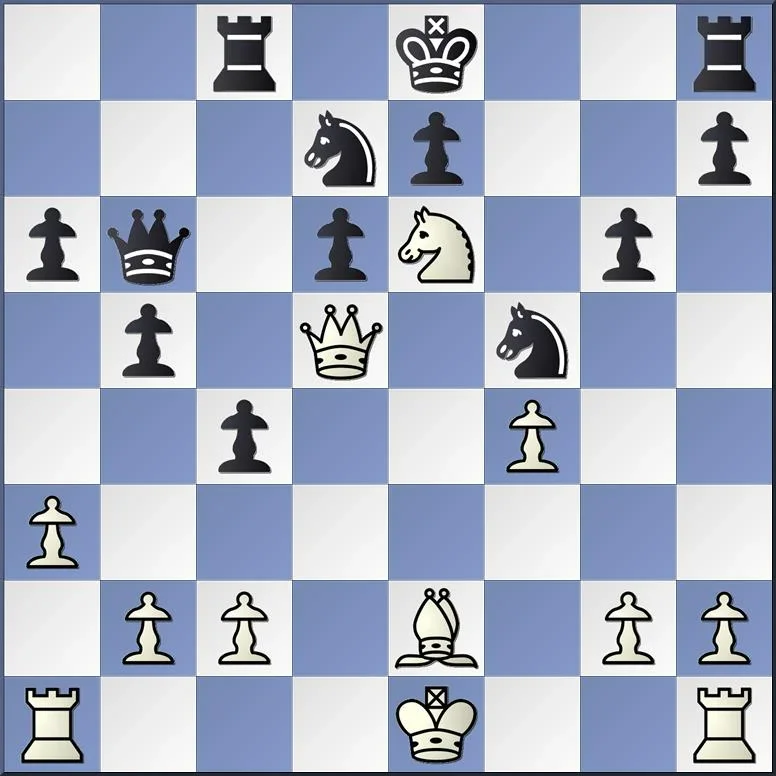
In the game White played 18. Ng5, threatening mate in two beginning with 19. Qf7+. Black prevented this with 18. ... Rf8 19. Nxh7 Ne3 20. Qe4 Rf5 and went on to win without difficulty.
But if this position appeared in a tactics trainer, White might well have found the stunning 18. Qxf5!! with the idea that 18. ... gxf5 is met by 19. Bh5 mate. Once you see the idea, it’s easy to visualize — the black king lacks escape squares and the check can’t be blocked — but seeing it is the tough part. The pattern isn’t automatic like the smothered mate, and without knowing there’s a tactic, good luck finding this in a real game!
So how does one learn to sense tactics at the board, and how to get to positions where the tactics flow? That’s where coaches and books might come in. The famous New York teacher NM Bruce Pandolfini thinks online trainers are great for sharpening pattern recognition, but they don’t yet “elucidate how things work or come about. Teachers and instructive books can explain the critical circumstances leading to positions with exploitable tactical patterns.” And Benjamin tries in his books to “help readers recognize tactical possibilities without such obvious cues.” I also would add that annotated games, especially with notes from the players themselves, can be of great use in building one’s intuition.
Going Deeper
Simple tactics are mostly about pattern recognition. A position pops up on the screen; you realize you know how to deliver mate, and you put in the right move. Easy-peasy.
But what happens when you don’t know the pattern? This is where you have to calculate. And here’s where online trainers have a few drawbacks that we have to account for.
One of the biggest challenges in solving tactics online comes with how we input the moves. We might have to calculate multiple lines a few moves into the position to solve the problem, but as soon as we click the first move, we know whether we are “right” — even if the key move is two moves away. Solving positions on paper or on the board doesn’t give us the same hint.
Multiple respondents pointed to this issue with online trainers. WGM Tatev Abrahamyan, for example, wrote that solving online “can create some bad habits, because the user gets immediate feedback on their first move without having to do the full calculation. ... If doing online puzzles, make sure you calculate the full line, [like you would in a] tournament game, before making your first move.” This ensures that you visualize deeply and calculate enough to verify your answer before moving.
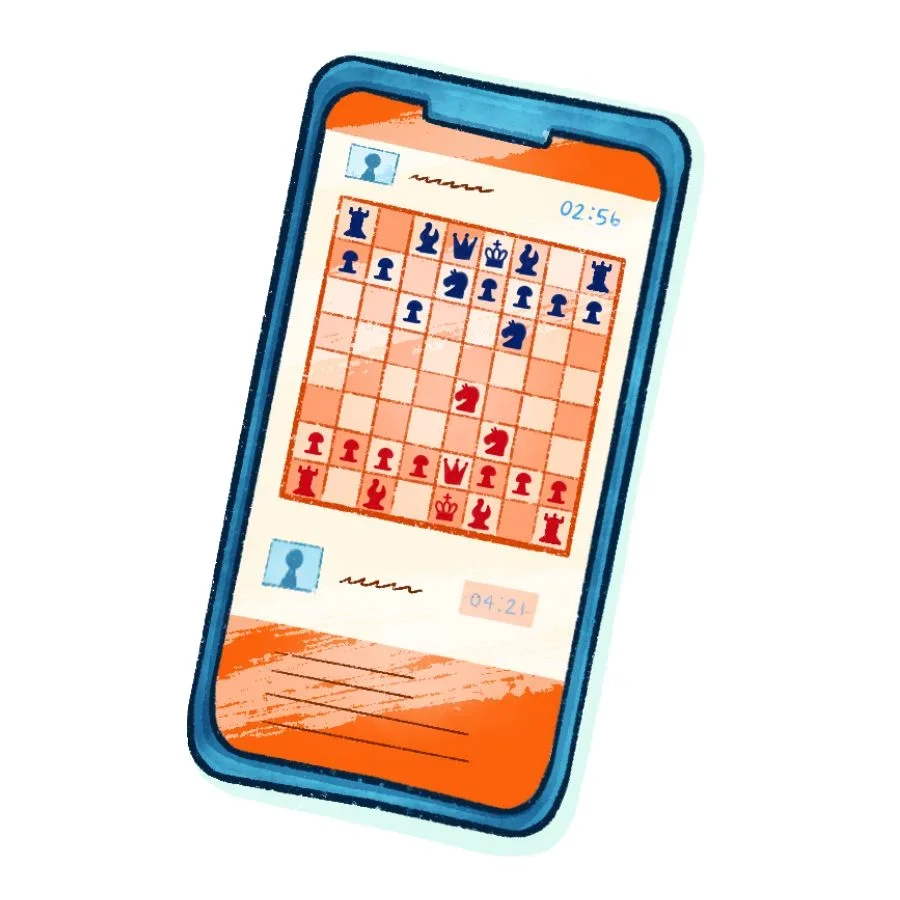
There’s another potential problem with solving online, and that has to do with the way the puzzles are generated. Sites like Chess.com and Lichess have such large puzzle databases because they automatically mine games for interesting positions. Most of the time this is OK, but the algorithm tends to choose very similar positions with limited depth and clear solutions.
The result, as GM Jacob Aagaard told me, is that quite often the “challenging line” we would have to see at the board is not the line that Stockfish and the algorithm want us to find. Here’s a position I saw in a Chess Steps teaching manual that illustrates this concern.
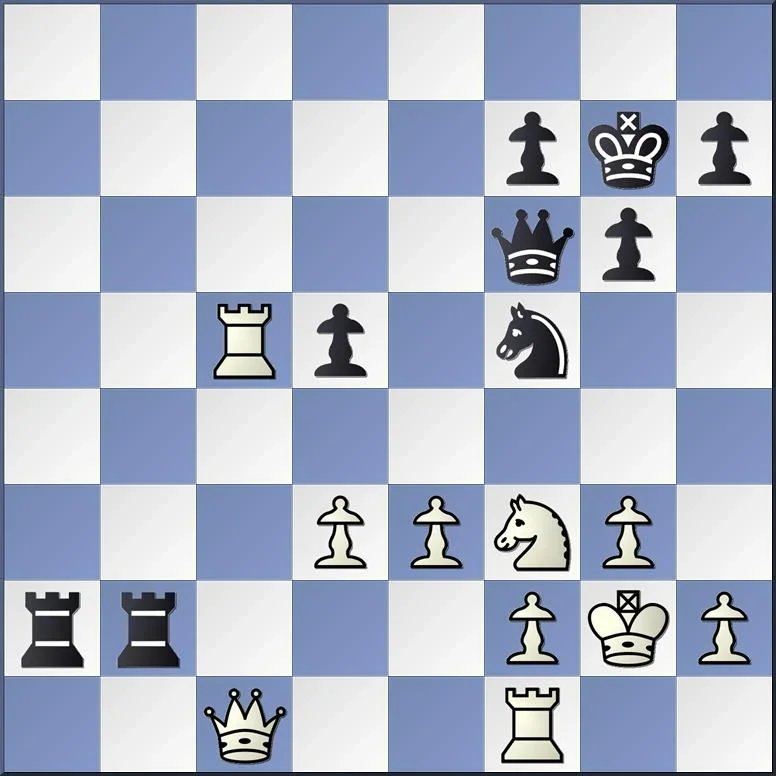
This is problem #96518 in the Chess Tempo puzzle database (Bouwmeester – Botvinnik, Wageningen 1958). The game was drawn after 27. ... d4 28. exd4 Nxd4 29. Qe3 Ne6 30. Re5.
But Botvinnik missed the nice shot 27. ... Rb1!. If you look at the top engine lines on the trainer, they are all nonsensical: (a) 28. Rc2 Rxc1 29. Rfxc1, (b) 28. Nd4 Rxc1 29. Nxf5+ Qxf5 30. Rcxc1, (c) 28. Kh1 Rxc1, (d) 28. Qd2 Rxd2, and (e) 28. Nh4 Nxh4+ 29. gxh4 Rxc1. All of them give up material in ways that human players would never consider.
The only move that matters from a practical perspective is (f) 28. Qxb1 Nxe3+ and it’s mate in three; the problem is that because engines will give up all their pieces before allowing mate, solvers are asked to respond to moves they’d never face at the board.

This is an example of why Aagaard recommends “curated material” — positions chosen by human experts. A good teacher can find positions that require more than simple pattern recognition, or that stretch our calculation powers in instructive ways.
Here’s a final example that would fit well into one of Aagaard’s calculation books, and that would probably frustrate you if you got it in Puzzle Rush. I suggest you set the position up on a board and write down all of your analysis before looking at the answer. This is a common training suggestion from many teachers, including Aagaard — the idea is that by forcing yourself to write down each variation when solving complicated problems, you can check whether you “really” saw every important line.
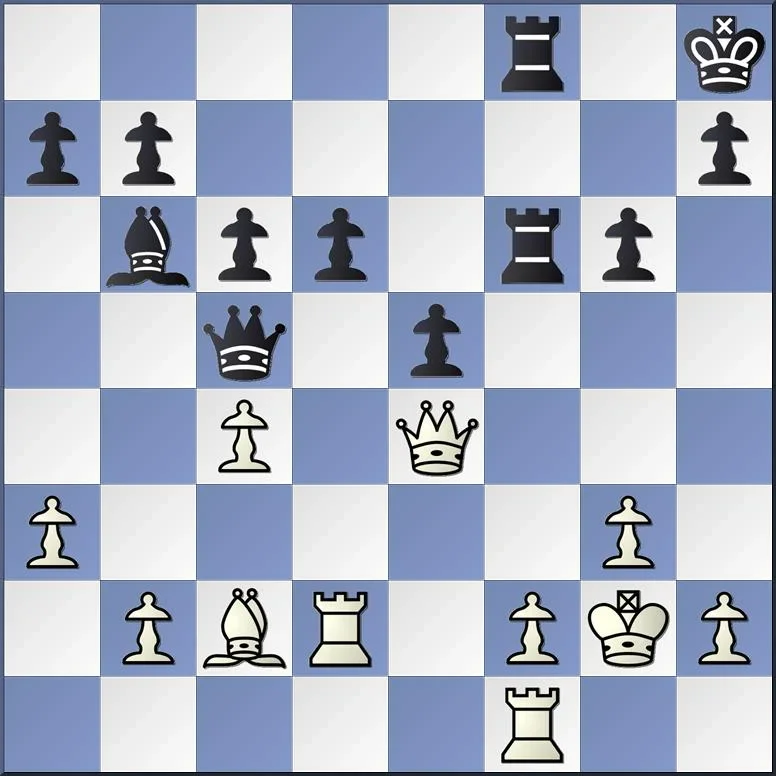
Black has just played 24. ... Bb6, and now White is faced with a decision. There are four attackers targeting the f2-pawn and just three defenders, one of which is the king. And the king, as we know, is not a good defender!
In the game White played the natural 25. Qe2 and found himself worse after 25. ... Qa5 26. b4?! Qxa3 27. c5 dxc5 28. f4 cxb4 in Ravinsky – Simagin, Moscow 1949.
The right move is 25. b4!! Rxf2+ 26. Rfxf2! (26. Rdxf2? lets Black off the hook with 26. ... Rxf2+ 27. Kh3 Qd4) 26. ... Rxf2+ and now comes the move that is nearly impossible to see without examining all the candidate moves on move 25: 27. Kg1!! puts the king in the crosshairs of a discovered check, but it turns out there aren’t any good ones! Black’s best move is likely 27. ... Qxc4 (27. ... Rf1+ 28. Kxf1 Qg1+ 29. Ke2 leaves White ahead at least a piece, while 27. ... Rxd2+ 28. bxc5 Bxc5+ 29. Kh1! gives White a queen for a rook) 28. Qxc4 Rf4+ and now the only move that keeps White ahead is 29. Rd4! Rxd4
(29. ... Bxd4+ 30. Kg2 Rf2+ 31. Kh3) 30. Qe6 (30. Qa2 Rd2+ 31. Kh1 saves the bishop, but Black’s central pawns get moving) 30. ... Rd2+ 31. Kh1 Rxc2 32. Qxd6 and White is winning.
This position is an example of what has come to be known as the “Shankland rule.” When you find a problem with an idea in your calculation, you should try to see a bit deeper and check whether the problem is real.
Here, it’s clear that White wants to trap the queen with 25. b4, but it looks like Black just takes on f2 and wins. Shankland’s famous question is, “What if we play it anyway?” The point of resistance is putting the king into a battery with the black rook and queen — it looks wrong! But careful calculation lets us push past our faulty intuition and discover White’s road to victory.
Both, and
By now it might seem like I’m arguing that books are better than online trainers for improvement. I’m not, and neither did any of my respondents. What they did say, almost to a person, is that both online tactics trainers and tactics books can help you improve, and we need to know how to use both of these tools.
Online tactics trainers are clearly excellent for growing your pattern recognition and sharpening your short calculation. You can solve a lot of puzzles in a very short time, and the ability to solve positions by theme can be very useful for building tactical intuition.
But there are also a few drawbacks as well. The computer-generated puzzles sometimes feel strange, and it’s easy to “guess” the first move and not really calculate variations like you would in a game. There are a couple of ways to get around both limitations.
Most young players solve puzzles on ChessKid.com, Chess.com, and Lichess, but there are other options. Websites like Chess Tempo (chesstempo.com) and Chessity (chessity.com) have a lot of the same features as ChessKid, Chess.com and Lichess, but Prilleltensky says that “students who spend time seriously solving on these websites seem to move their results and tactical skill in a different way.”
I’d also recommend CT-ART. It’s an app for phones and tablets that tries to merge the best of the human and online worlds, using exercises from Maxim Blokh’s book Combinative Motifs and presenting them to young players for solving on their screens. The positions are chosen by a human teacher, and if you get stuck, there are simplified positions that work as hints.
Still, online trainers aren’t perfect. You can try to overcome some of the limitations by setting the hard puzzles up on a board to work on visualization and calculation. But let’s be real — nobody does that!
All my respondents thought that books were important for improvement, but I was surprised that it was my youngest respondent, GM Andy Woodward, who most strongly argued for their value. While he has gained immensely from online trainers — he’s the Puzzle Rush champ after all! — he was very clear about how books helped him get stronger:
“I think if you really want to improve your calculation, you should solve puzzles or studies from books over the board. Solving puzzles from books requires you to calculate variations widely and deeply. ... It forces you to consider your opponent’s response and resources as well as your own. I would say that solving puzzles from books helped me a lot before became a grandmaster.”
I was also struck by something his mom, Wendy, wrote in a separate email: “I noticed that Andy’s over-the-board calculation got rusty after he became a GM because he didn’t do much calculation from the books anymore — he said he hadn’t found a book for his level. ... He mainly relied on the online puzzles, and he could feel the difference in his calculation strength.”
So which books should you use? That depends on your rating. Among the recommendations for beginners were Winning Chess Exercises by Chess Life Kids columnist Jeff Coakley, Practical Chess Exercises by Ray Cheng, The Manual of Chess Combinations by Sergey Ivashchenko, and the 1001 Chess Exercises series from FM Frank Erwich.
Abrahamyan also mentioned two newer books by Erwich: 100 Tactical Patterns You Must Know and The 100 Tactical Patterns You Must Know Workbook. Both are excellent, and both find their roots in the Dutch Chess Steps workbooks aimed at players up to 2200. I think the Steps are the single best series for improving players, and while they’re best studied with a coach, they are also useful for solo improvers so long as you study the “reminders” (teaching notes) for each book. They are available at stappenmethode.nl.
Stronger players might look to Combinative Motifs by Blokh, Invisible Chess Moves by FM Emmanuel Neiman and IM Yochanan Afek, both volumes of IM Axel Smith’s The Woodpecker Method, and Perfect Your Chess by Volokitin and Grabinsky. The books of Dvoretsky and Aagaard were mentioned more than once, as was Aagaard’s online academy Killer Chess Training (www.killerchesstraining.com) and its weekly sets of paper homework puzzles.
In the end, of course, Prilleltensky is right: “The best tactics book is the one you will read and solve!” The same is true of online trainers: Putting in the work is the best way to succeed!
The Spiegel Method
You might have seen WFM Elizabeth Spiegel in the 2012 documentary Brooklyn Castle. She works at I.S. 318 in Brooklyn, New York, where she runs a chess program that is part of the daily school curriculum.

Spiegel’s students do extremely well at national scholastics — at the 2025 SuperNationals, in May, they took team firsts in the K-8 U1700, U900, and U700 sections; individual firsts in the U1700 and U900, and a handful of team and individual place prizes. What’s the secret to their success?
A big part of it has to do with exposure. Because chess is an elective at 318, kids can take in-school classes five days a week, along with optional practice at lunch, sessions before and after school, and tournaments on weekends. Sounds like a dream for an improving player!
Spiegel also asks every student to do weekly homework: three G/10 games on Lichess and 20 tactics in their trainer. It might not sound like a lot, but it adds up over time, especially if you analyze the games after you play them. Maybe you can try the “Spiegel Method” and see whether it helps you improve too!
Categories
Archives
- December 2025 (20)
- November 2025 (29)
- October 2025 (39)
- September 2025 (27)
- August 2025 (29)
- July 2025 (43)
- June 2025 (25)
- May 2025 (24)
- April 2025 (29)
- March 2025 (29)
- February 2025 (20)
- January 2025 (24)
- December 2024 (34)
- November 2024 (18)
- October 2024 (35)
- September 2024 (23)
- August 2024 (27)
- July 2024 (44)
- June 2024 (27)
- May 2024 (31)
- April 2024 (51)
- March 2024 (34)
- February 2024 (25)
- January 2024 (26)
- December 2023 (29)
- November 2023 (26)
- October 2023 (37)
- September 2023 (27)
- August 2023 (37)
- July 2023 (47)
- June 2023 (33)
- May 2023 (37)
- April 2023 (45)
- March 2023 (37)
- February 2023 (28)
- January 2023 (31)
- December 2022 (23)
- November 2022 (32)
- October 2022 (31)
- September 2022 (19)
- August 2022 (39)
- July 2022 (32)
- June 2022 (35)
- May 2022 (21)
- April 2022 (31)
- March 2022 (33)
- February 2022 (21)
- January 2022 (27)
- December 2021 (36)
- November 2021 (34)
- October 2021 (25)
- September 2021 (25)
- August 2021 (41)
- July 2021 (36)
- June 2021 (29)
- May 2021 (29)
- April 2021 (31)
- March 2021 (33)
- February 2021 (28)
- January 2021 (29)
- December 2020 (38)
- November 2020 (40)
- October 2020 (41)
- September 2020 (35)
- August 2020 (38)
- July 2020 (36)
- June 2020 (46)
- May 2020 (42)
- April 2020 (37)
- March 2020 (60)
- February 2020 (38)
- January 2020 (45)
- December 2019 (34)
- November 2019 (35)
- October 2019 (42)
- September 2019 (45)
- August 2019 (56)
- July 2019 (44)
- June 2019 (35)
- May 2019 (40)
- April 2019 (48)
- March 2019 (61)
- February 2019 (39)
- January 2019 (30)
- December 2018 (29)
- November 2018 (51)
- October 2018 (45)
- September 2018 (29)
- August 2018 (49)
- July 2018 (35)
- June 2018 (31)
- May 2018 (39)
- April 2018 (31)
- March 2018 (26)
- February 2018 (33)
- January 2018 (30)
- December 2017 (26)
- November 2017 (24)
- October 2017 (30)
- September 2017 (30)
- August 2017 (31)
- July 2017 (28)
- June 2017 (32)
- May 2017 (26)
- April 2017 (37)
- March 2017 (28)
- February 2017 (30)
- January 2017 (27)
- December 2016 (29)
- November 2016 (24)
- October 2016 (32)
- September 2016 (31)
- August 2016 (27)
- July 2016 (24)
- June 2016 (26)
- May 2016 (19)
- April 2016 (30)
- March 2016 (36)
- February 2016 (28)
- January 2016 (32)
- December 2015 (26)
- November 2015 (23)
- October 2015 (16)
- September 2015 (28)
- August 2015 (28)
- July 2015 (6)
- June 2015 (1)
- May 2015 (2)
- April 2015 (1)
- February 2015 (3)
- January 2015 (1)
- December 2014 (1)
- July 2010 (1)
- October 1991 (1)
- August 1989 (1)
- January 1988 (1)
- December 1983 (1)



